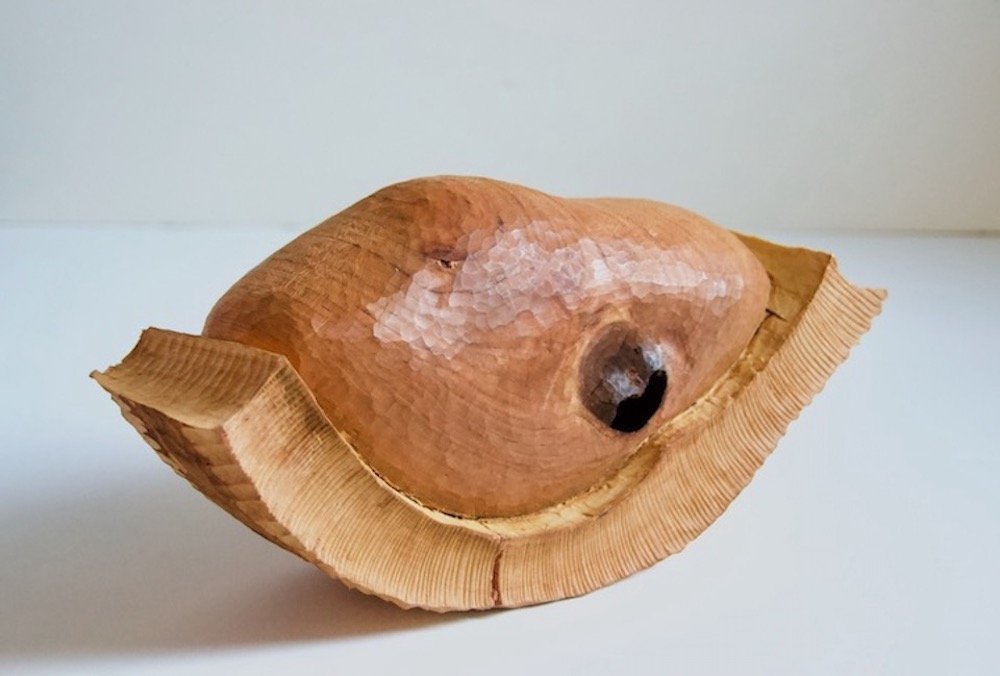This end-grain cut of black cherry was pulled from our firewood pile. Its subtle arc and the contrast between the pale sapwood and the red-brown heartwood recommended it for sculpture work. The pseudo-arc was the result of the wood-splitting process - either the representing the weaker lines of the end grain or how the wood-splitter fell, or both. The sap-to-heart contrast is endemic to all mature black cherry trees.
What is the work of wood sculpture? It’s finding a way to shape something beautiful from what at first glance appears to be an uninteresting chunk of wood, good only for throwing in the fire. One cannot simply save it from the fire and leave it as is. What would be the point of that?! Once it’s aside, it must undergo a shaping, a removal process. This process echoes the earlier process the tree experienced as its lower branches died off or were removed in order to facilitate growth. This process unveils the wood’s true character underneath the dust and grit it accumulated in the wood pile and gives it more dimension.
This work is fundamentally relational. I impose my will upon the wood, through eye, muscle, and tools, while the wood responds in accordance with its grain, hardness, and knots. My will is limited to the wood’s character; therefore, my will is continually being shaped by the character of the wood. It is an unseen exchange, a call and response. At times, I relent. Other times, I use stronger tools to bring about the changes needed to make the piece more symmetrical, more proportional in relation to itself.


